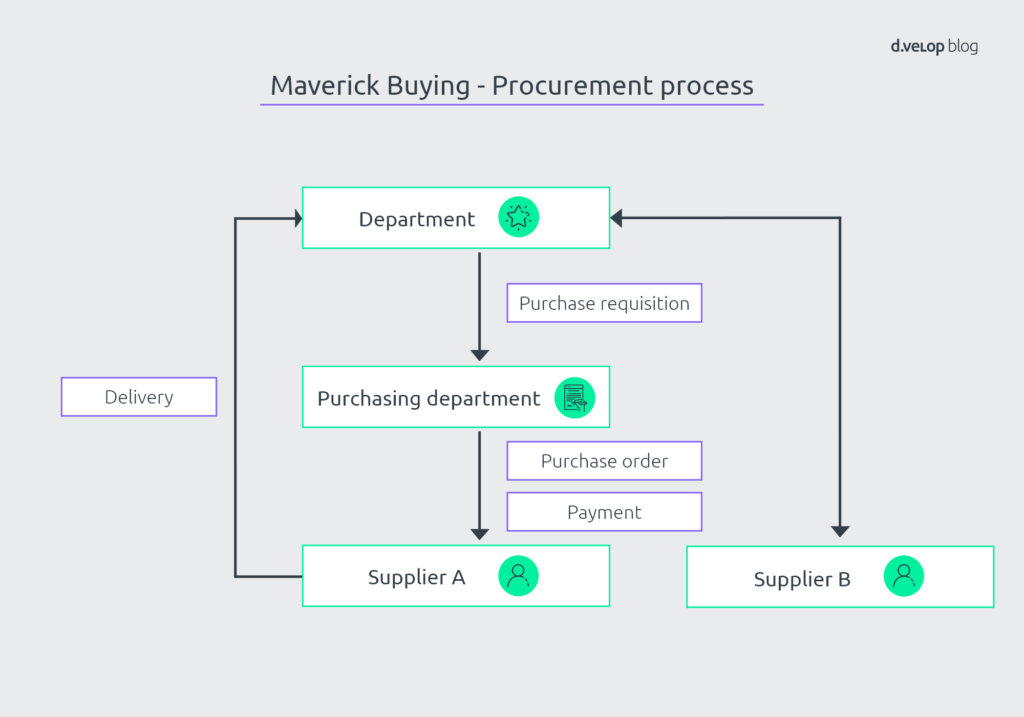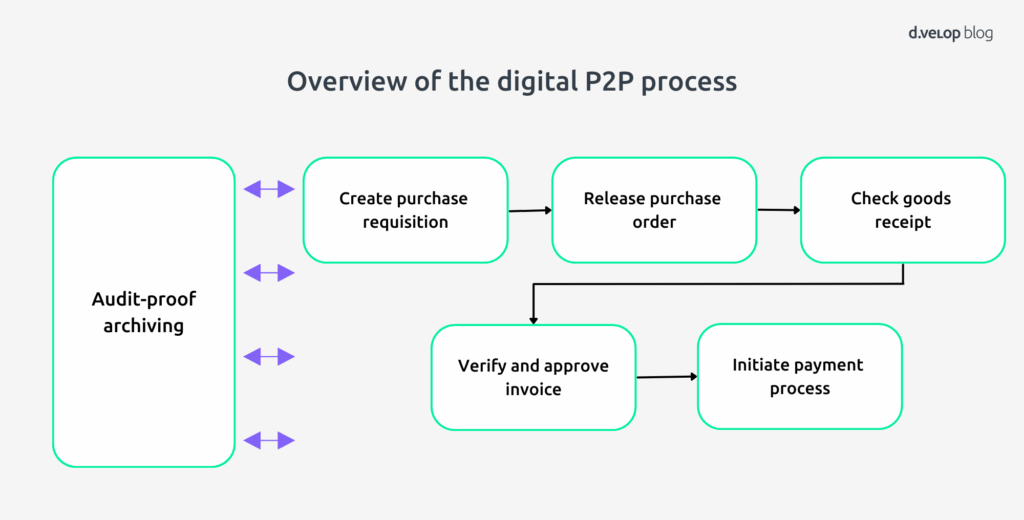Employee initiative is generally welcomed in most organisations. But what happens when initiative goes so far that employees start procuring goods or services on behalf of the company without approval from the purchasing department, for example by submitting their own purchase requisition? This phenomenon is by no means rare; in fact, it even has a name: Maverick buying. All the more reason for us to take a closer look at the different types, consequences and causes of this off-contract purchasing behaviour and, of course, the remedies.
What exactly is maverick buying?
Maverick buying refers to a phenomenon where employees within a company or organisation independently purchase products or services without consulting the procurement department or their managers. This behaviour is often described as off-contract or rogue buying and can lead to inefficient procurement processes, as it reduces control over purchasing activities within the organisation.

3 types of maverick buying
Before we look at the reasons behind maverick buying, it is helpful to start with a quick overview of the different types. In principle, there are three main forms of this off-contract purchasing behaviour:
- Type 1: Procurement takes place entirely without the involvement of the purchasing department.
- Type 2: The purchasing department is only involved at a very late stage.
- Type 3: Existing framework agreements are simply ignored.
Reasons for maverick buying
When employees take procurement into their own hands, in whatever form, a number of problems and disadvantages arise for the company. But what drives employees to show precisely the kind of initiative that many employers would otherwise like to see in other areas?
Why departments handle procurement themselves
There are many reasons for maverick buying. In most cases, however, employees are not fully aware of the extent of the damage this behaviour can cause to the procurement function and, ultimately, to their employer. The most common reasons include:
- Lack of communication or transparency regarding processes and framework agreements
- Lack of trust in the purchasing department
- Slow response times in urgent situations
- Personal preferences and relationships with other suppliers
- Misjudgement of competencies within the organisation
- Failure to consider the bigger picture and total costs
Advantages of maverick buying – is that possible?
Looking at the causes of maverick buying already suggests that how this behaviour is evaluated within an organisation strongly depends on perspective. While the procurement function aims to keep the purchasing process as structured as possible, specialist departments are often focused on acting quickly, flexibly and in a way that supports employees. Conflict and debate are therefore inevitable. From a neutral standpoint, the following advantages can be identified:
- Speed
- Individuality and flexibility
- Use of special offers
Risks of maverick buying
Alongside the advantages that specialist departments may see in maverick buying, the risks for the organisation as a whole are enormous.
According to a study by the consultancy Spring Procurement, around 34 per cent of goods and services are sourced by departments without informing the purchasing function. The resulting effects of maverick buying are varied and cause on average 15 per cent additional costs.
The most common risks of maverick buying at a glance:
- Risk of corruption: unofficial suppliers may make private payments to buyers (kickbacks)
- Lack of transparency regarding total spend across cost categories
- Unqualified suppliers receive contracts
- More difficult invoice verification due to missing order data
- Procurement processes are not followed as prescribed (e.g. demand analysis, signature regulations, budget guidelines)
- Follow-up costs can arise from disputed warranties and guarantees
- No price comparisons due to missing offers
- Supplier discounts are taken up less often as process times increase
- An increase in the number of suppliers leads to weaker volume bundling
Controlling maverick buying without slowing down employees
Although maverick buying may offer some day-to-day benefits for employees, the disadvantages clearly outweigh the advantages for the organisation. According to Daniel Wiese, Partner at the Boston Consulting Group, the role of procurement should therefore be to establish itself as a central hub within the organisation and to maintain that position through the consistent use of all available procurement levers. With so many different perspectives on the issue, this is a demanding task. Measures against maverick buying must therefore be chosen carefully and with sensitivity.
Creating transparency and clarity
When dealing with maverick buying, the top priority for procurement should be to create transparency and clarity around its activities. Only if employees perceive potential extra effort as meaningful and can see it in the bigger picture will they follow internal guidelines. Awareness-building is key here.
Clearly defined and communicated responsibilities
At the same time, responsibilities within the organisation should be clearly defined and communicated. Despite all openness, it is important not to forget to position procurement unambiguously as the single point of contact for all purchasing activities. After all, it is usually not the task of specialist departments to research suppliers, negotiate conditions or place orders.
The remedy: user-friendly digital procurement processes
Ultimately, the key is to make procurement processes as simple as possible from a technical perspective – and the best way to achieve this is digitally.
A procurement or purchase-to-pay process traditionally consists of five analogue steps, which can in turn be broken down into sub-processes: purchase requisition, order, goods receipt, invoice and payment.
If this process is carried out manually and not considered as a whole, a number of stumbling blocks can arise at the various interfaces. In this article we have already highlighted one of these pitfalls with the example of maverick buying.
Reducing the maverick buying rate to below 5% with a digital procurement process
To ensure procurement processes run seamlessly, companies need solutions that digitally link each step – from the purchase requisition to goods receipt recording and digital invoice processing, all the way to the digital file. The following graphic illustrates the process flow.

How to successfully digitise the entire P2P process from end to end is explained in detail in our whitepaper:
A Few Steps to Automated Procure-to-Pay Processes in SAP
Gain insight into what a digital procurement process looks like and its benefits over the traditional process.
